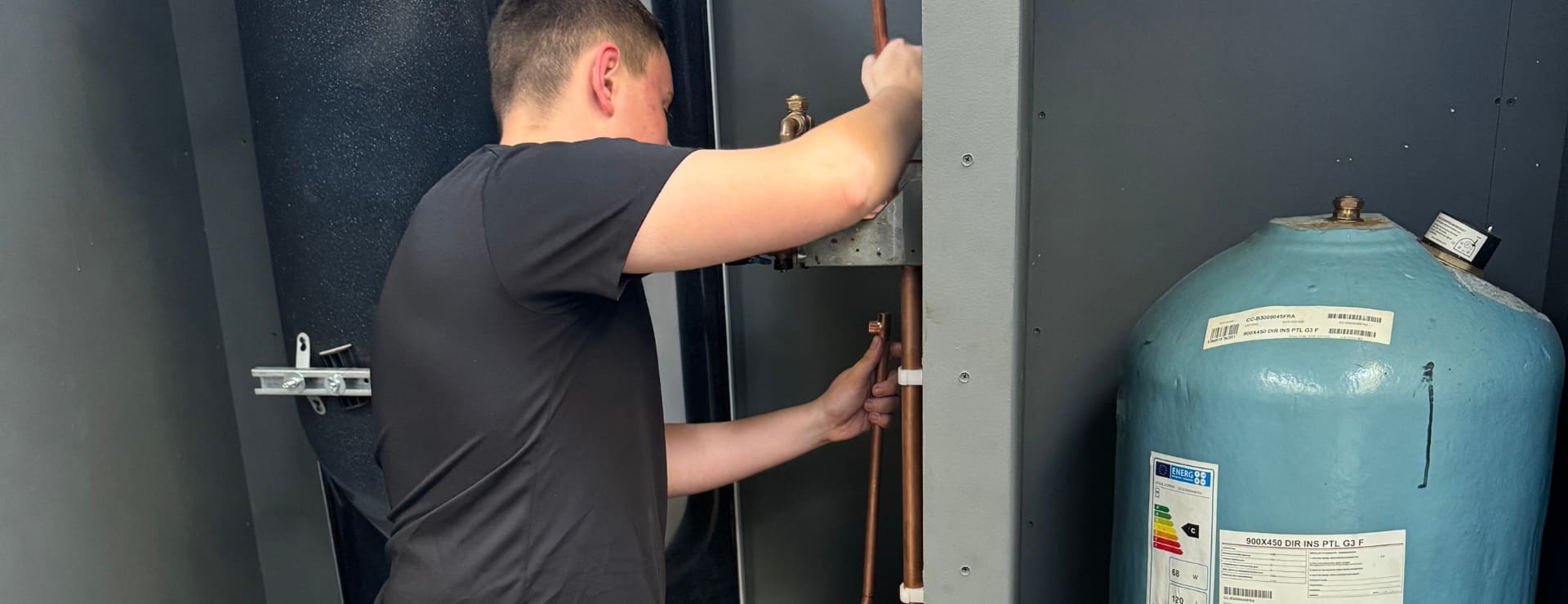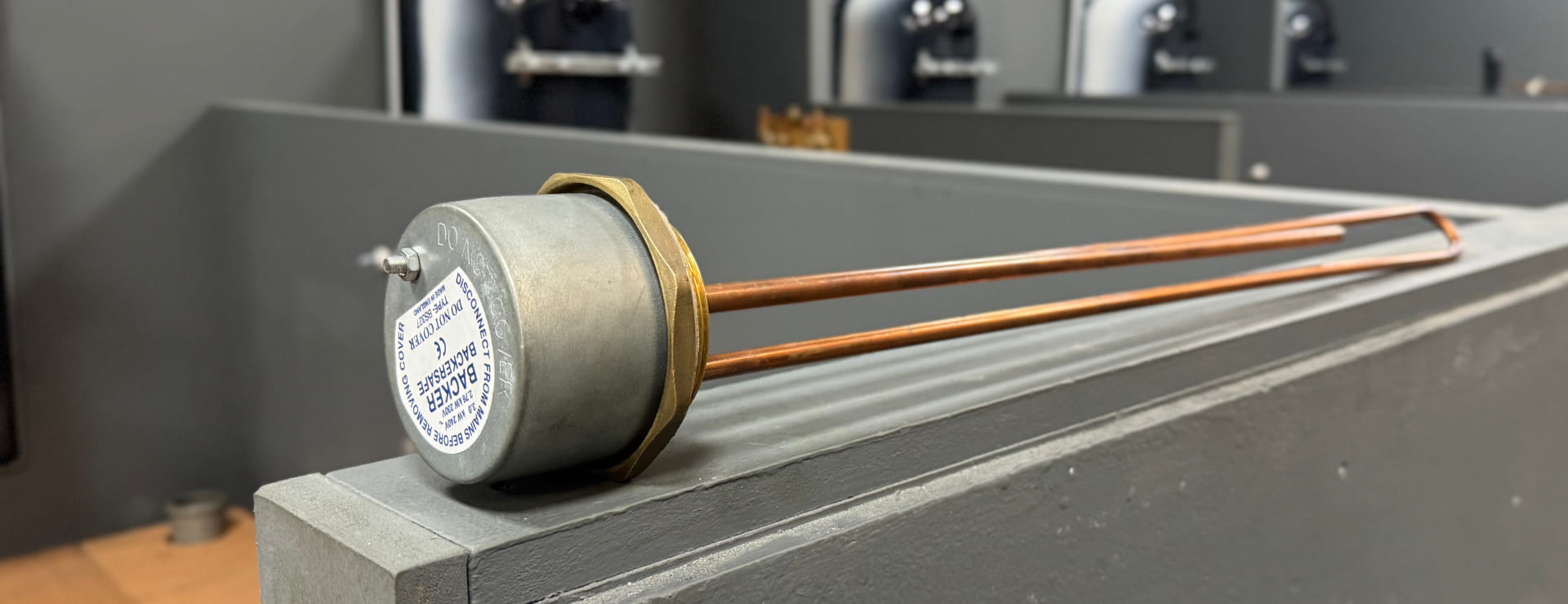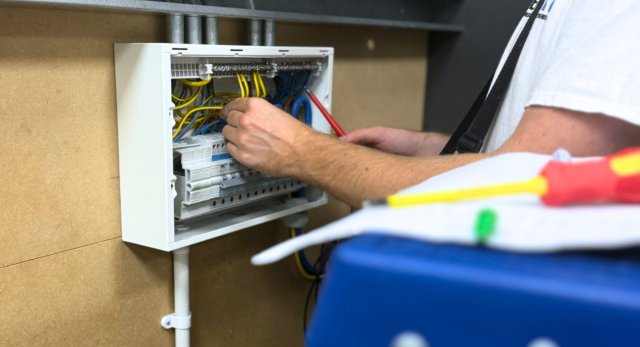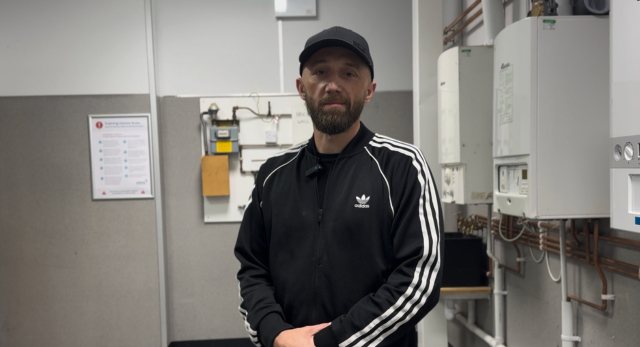Your immersion heater is basically a chunky electric element, usually made from corrosion-resistant metals like copper or stainless steel. This element is immersed in the water inside your hot water cylinder.
How Does an Immersion Heater Work? (Think “Big Kettle”)
An immersion heater is an electric water heater that sits inside your hot water cylinder. It works a bit like a giant kettle, with an electric element that heats the water directly from within. Unlike gas boilers, which heat water indirectly via a heat exchanger, immersion heaters are all about direct contact and instant results. Here’s the science bit, but don’t worry-it’s not rocket science:
- Electricity flows through the heating element.
- The element heats up, just like the coil in your kettle.
- The heat transfers directly into the surrounding water.
- Hot water rises to the top of the tank (thanks, convection currents!), ready to be piped off to your taps, bath, or shower.
Most immersion heaters are rated at about 3kW, which is a decent amount of oomph for heating a household’s supply of hot water. They’re wired into the mains via an isolating switch, and always fitted with a thermostat to keep things safe and efficient.
They’re a staple in UK homes, especially in properties without access to gas mains, or as a trusty backup when your main heating system is on the fritz. You’ll find them in both vented and unvented hot water cylinders, and they’re often used alongside solar thermal systems for a bit of eco-friendly flair.
The Role of the Thermostat
The thermostat is the unsung hero of your immersion heater. It monitors the water temperature and switches the heater off when the set temperature is reached. If the water cools down, the thermostat switches the heater back on. This keeps your water hot, but not scalding, and helps save energy.
Top tip: Always set your thermostat to at least 50°C. This is hot enough to kill off nasties like Legionella bacteria, but not so hot that you’ll need oven gloves to run a bath.
The Physics: Convection Currents and Hot Water Delivery
Let’s get a bit geeky for a second. When the element heats the water, the hot water rises to the top of the tank, while cooler water sinks to the bottom. This creates a convection current, ensuring the hottest water is always at the top-right where your taps draw from.
As you use hot water, cold water flows in at the bottom, keeping the pressure up and the system running smoothly. This means you can have a hot shower while someone else runs a bath, provided your tank is big enough!
Types of Immersion Heaters
Immersion heaters aren’t a one-size-fits-all affair. Here’s a quick rundown of the main types you’ll encounter:
| Type | Where Used | Key Features |
|---|---|---|
| Over-the-side | Open tanks, containers | Easy to remove, ideal for maintenance-heavy jobs |
| Flanged | Tanks, pressure vessels | Bolted in with a flange, robust, easy to replace |
| Screw plug | Small tanks, compact spaces | Screws into threaded opening, neat and efficient |
Material matters: Most domestic immersion heaters use copper or stainless steel elements. Industrial versions might use Incoloy or titanium for extra durability, especially when dealing with aggressive or high-temperature liquids.
Common Problems and Troubleshooting
Even the best immersion heaters can have the odd hiccup. Here’s a quick troubleshooting guide:
| Problem | Likely Cause | Fix |
|---|---|---|
| No hot water | Tripped fuse, faulty thermostat, blown element | Check fuses, replace thermostat or element |
| Water not hot enough | Thermostat set too low, scale on element | Adjust thermostat, descale element |
| Water too hot | Faulty thermostat | Replace thermostat |
| Strange noises (crackling, popping) | Limescale build-up | Descale or replace element |
| Leaks | Faulty seals, corrosion | Replace seals or tank |
If in doubt, call a professional.
Why Use an Immersion Heater?
Let’s be honest: gas boilers are great, but sometimes you need a backup. Here’s why immersion heaters are still a household essential in 2025:
- Total independence: Works even if your boiler or central heating fails.
- Electricity-powered: Perfect for homes off the gas grid, or if you’re going green with solar PV.
- Flexible: Can be used as the main hot water source, or just as a backup.
- Simple installation: No need for complex pipework or flues.
- Safe: Modern immersion heaters have built-in thermostats and safety cut-offs.
Are Immersion Heaters Expensive to Run?
Let’s talk money. Yes, immersion heaters can be pricey to run if you leave them on 24/7. Electricity isn’t cheap, and a 3kW heater will rack up the pennies if you’re not careful. But there are ways to keep costs down:
- Insulate your tank: Modern tank jackets keep the water hot for hours, reducing the need for constant reheating.
- Use a timer: Heat water during off-peak hours when electricity is cheaper.
- Only heat what you need: Don’t keep the whole tank hot if you’re just washing up.
- Consider renewables: Pair your immersion heater with solar panels for free hot water when the sun’s out.

Installation: DIY or Call the Pros?
While it’s tempting to have a go yourself, immersion heater installation is best left to the professionals. Here’s why:
- Electrical safety: Immersion heaters need a dedicated circuit and proper isolation.
- Water safety: Correct installation ensures no leaks, correct venting, and safe operation.
- Regulations: Installations must comply with UK wiring and plumbing regulations.
- Warranty: Professional installation protects your warranty and insurance.
Pro tip: If you’re a plumber or heating engineer, check out Logic4training’s plumbing courses and hot water systems training to get hands-on experience with immersion heaters.
Step-by-Step: What Happens During Installation?
- Site preparation: Ensure the area is clear, accessible, and safe.
- Tank positioning: Secure the tank, connect to cold water (mains or loft tank).
- Electrical hookup: Connect the heater to the mains, usually via a dedicated circuit.
- Thermostat setup: Fit and calibrate the thermostat for safe, efficient operation.
- Safety checks: Test all connections, check for leaks, and ensure safety devices (like pressure relief valves) are working.
- System testing: Run the system, check the water heats up, and verify everything is working as it should.
Maintenance: Keeping Your Immersion Heater in Top Shape
Immersion heaters are pretty low-maintenance, but a little TLC goes a long way, and there are some simple steps you can take to maintain their longevity:
- Check the thermostat: Make sure it’s working and set to the right temperature.
- Inspect for limescale: In hard water areas, scale can build up on the element, reducing efficiency. Descale as needed.
- Look for leaks: Check the tank and connections regularly.
- Test safety devices: Make sure pressure and temperature relief valves are functional.
Environmental Impact: Are Immersion Heaters Sustainable?
With the UK’s push towards net zero, immersion heaters are evolving. Modern units are more efficient, and when paired with renewable electricity (like solar panels or wind), they can be a genuinely green way to heat your water.
- Electricity is getting greener: As the grid decarbonises, electric heating becomes more sustainable.
- Smart controls: Reduce waste and optimise usage.
- Longer lifespan: Advanced materials mean less waste and fewer replacements.
If you want to shrink your carbon footprint, consider upgrading to a modern immersion heater and pairing it with renewables.
Innovations and Trends: The Future of Immersion Heaters
The immersion heater may not be the most exciting piece of technology, but there are a number of ways that it can be developed to bring it into the modern age.
- Smart thermostats: Wi-Fi-connected controls let you adjust your hot water from your phone.
- IoT integration: Monitor and manage your hot water remotely, optimise energy use, and get maintenance alerts.
- Eco-friendly materials: New alloys and coatings for longer life and better efficiency.
- Renewable energy compatibility: Designed to work seamlessly with solar PV and heat pumps.
- Advanced safety: Improved cut-offs, pressure relief, and fail-safes.
The market for immersion heaters is booming, and there is a shift towards smarter, greener, and more efficient solutions. Expect to see more modular designs, better corrosion resistance, and tighter integration with home automation systems.
Final Thoughts
Immersion heaters might seem old-school, but they’re evolving fast. With smart controls, renewable energy compatibility, and ever-improving efficiency, they’re set to remain a key part of the UK’s hot water landscape for years to come.
Ready to get hands-on? Explore Logic4training’s courses and take your skills to the next level. Or, if you’re just here for the hot water, now you know exactly what’s going on inside that mysterious tank in the airing cupboard.
Stay warm, stay savvy, and don’t forget to switch off your immersion heater!
FAQ
How long does it take for an immersion heater to heat a tank of water?
Typically, a 3kW immersion heater will heat a standard 120-litre tank in about 2-3 hours, but this depends on the starting temperature and insulation quality.
Can I run my immersion heater from solar panels?
Yes! Modern immersion heaters can be connected to solar PV systems, allowing you to heat water for free when the sun is shining.
Is it safe to leave my immersion heater on all the time?
While it’s safe thanks to thermostatic controls, it’s not cost-effective. Use a timer or only switch it on when needed to save money.
What’s the best temperature to set my immersion heater?
Set your thermostat to at least 50°C to prevent bacteria growth, but not much higher to avoid scalding and wasted energy.
How often should I service my immersion heater?
Check the thermostat and safety devices annually, and descale the element every 1-2 years in hard water areas for best performance.










